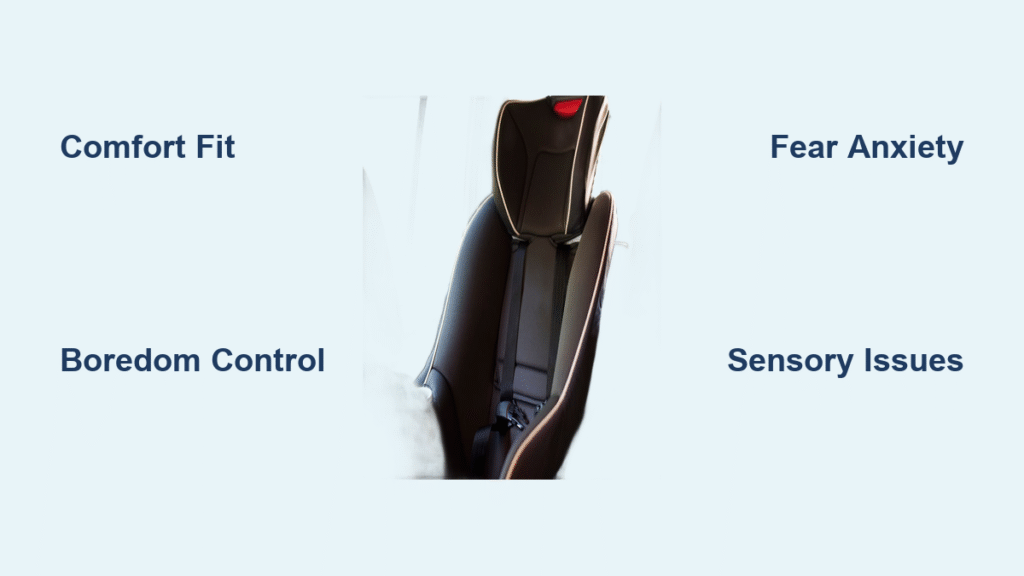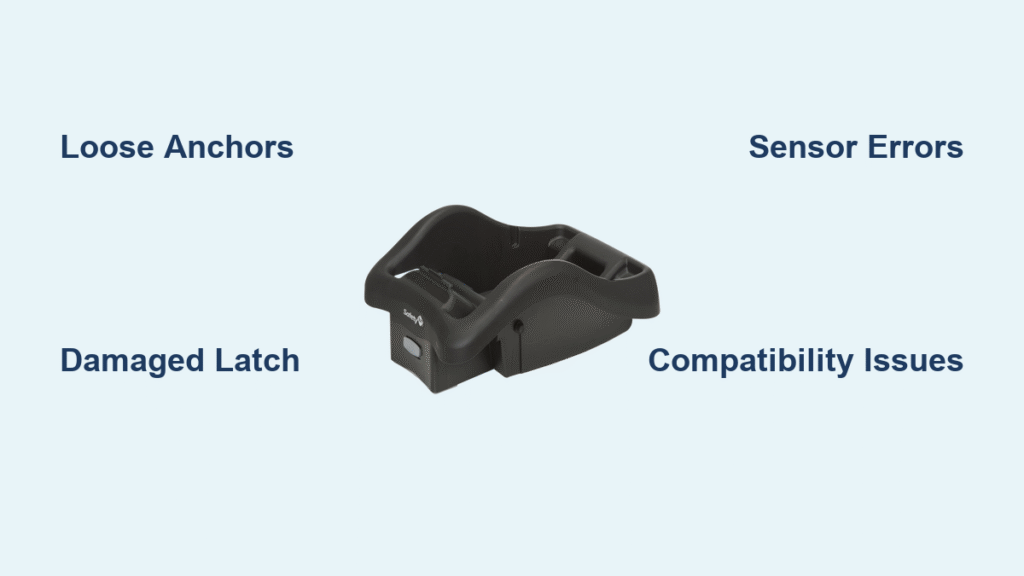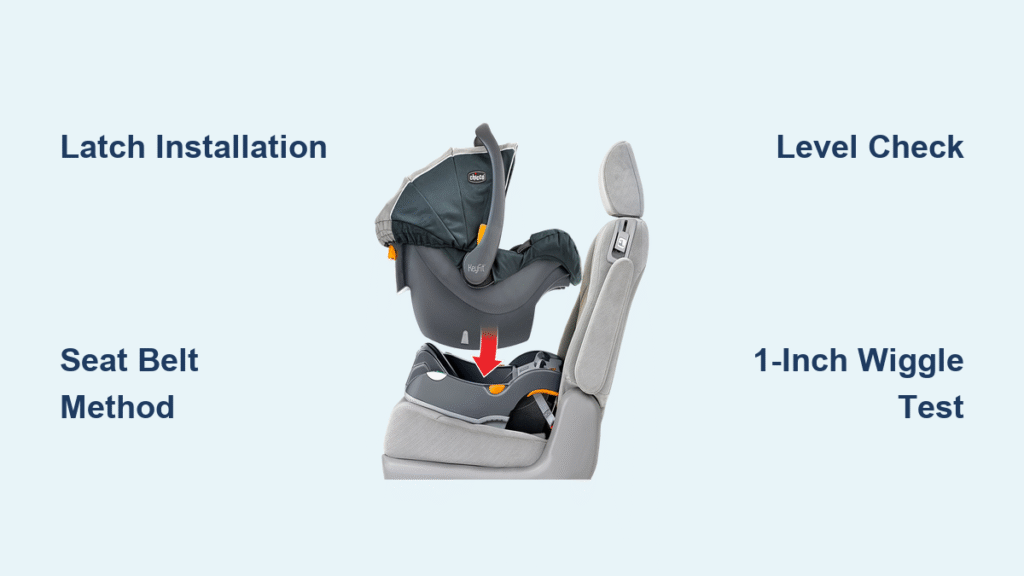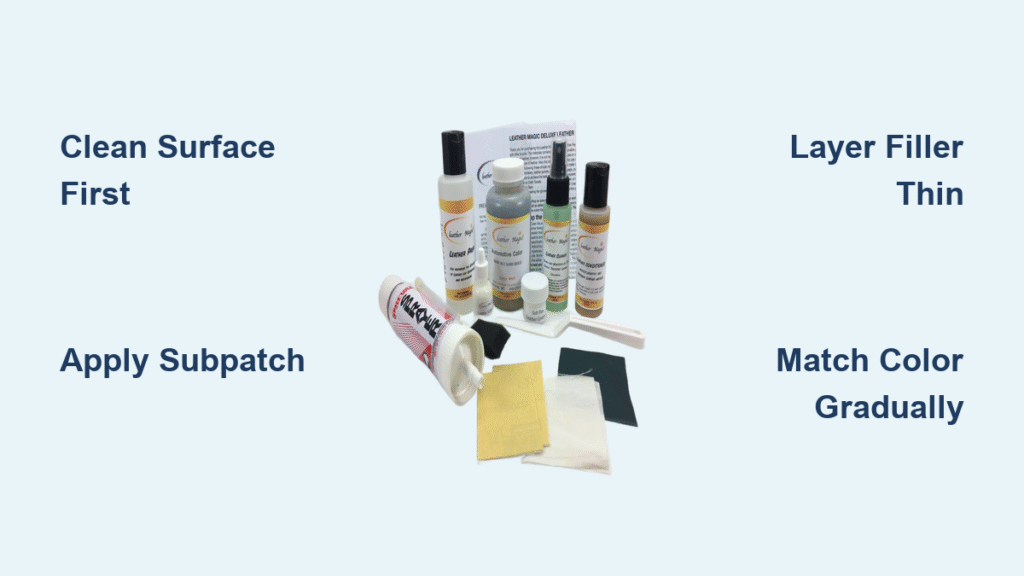Dealing with a toddler who hates their car seat can turn every outing into a battle of wills, leaving you exhausted and dreading the next trip to the store or daycare drop-off. If your little one screams, arches their back, or fights tooth and nail to avoid buckling up, you’re not alone—this is a common phase for many parents of 1- to 3-year-olds. The good news? A quick fix like adding a favorite toy or snack can often provide immediate relief, helping you get on the road without the drama.
In this comprehensive guide, we’ll go beyond that initial band-aid to explore the root causes of why your toddler hates their car seat and offer multiple, practical solutions tailored to different ages and situations. From adjusting the seat for maximum comfort to building positive associations with car rides, you’ll find step-by-step strategies to make travel time enjoyable again. By the end, you’ll feel empowered to tackle this challenge head-on, ensuring safer and calmer journeys for everyone.
Common Causes Why Your Toddler Hates Their Car Seat
Understanding why your toddler resists the car seat is the first step toward fixing it. Toddlers are at an age where they’re asserting independence, but car seats can feel restrictive or uncomfortable. Here are the most frequent culprits, based on insights from pediatric experts and parent forums like those from the American Academy of Pediatrics (AAP).
Physical Discomfort from Improper Fit or Restraints
Many toddlers squirm because the car seat doesn’t fit them right. If the harness is too tight, too loose, or the seat is at the wrong recline angle, it can pinch or feel confining. Overheating from bulky clothing or poor ventilation adds to the misery, especially in warmer months. According to the AAP, about 40% of car seat misuse stems from incorrect installation or adjustment, leading to unnecessary discomfort.
Fear or Anxiety from Past Experiences
A bumpy ride, a scary noise, or even a minor fender-bender can create lasting fear. Toddlers have vivid imaginations and short memories for positives but long ones for negatives. If your child associates the car seat with motion sickness or separation from you, they’ll fight it every time. Studies from child psychologists note that separation anxiety peaks around 18-24 months, amplifying this issue during car transitions.
Boredom and Desire for Control
Toddlers thrive on stimulation, but a car seat straps them down during what could be playtime. They might hate it simply because it limits their movement when they’d rather be running around. This is especially true for active 2-year-olds testing boundaries—refusing the seat becomes a way to exert control. Parent surveys from sites like BabyCenter highlight boredom as a top complaint, with kids under 3 getting restless after just 10-15 minutes.
Developmental or Sensory Sensitivities
Some toddlers have sensory processing issues, where the texture of the straps, the vibration of the car, or even the smell of the seat covering triggers aversion. Conditions like autism spectrum disorder or general sensory sensitivities affect up to 16% of children, per the CDC, making car seats feel overwhelming. Teething, illness, or fatigue can also heighten irritability, turning a neutral seat into an enemy.
Effective Ways to Fix Your Toddler Hating the Car Seat

Now that we’ve pinpointed the causes, let’s dive into solutions. Start with the simplest methods and progress to more involved ones. These are drawn from AAP guidelines, child behavior experts, and real-parent successes. Always prioritize safety—never leave your child unattended in the car or drive distracted.
Method 1: Optimize Comfort and Fit (Quick Setup Fix, 15-30 Minutes)
The easiest starting point is ensuring the car seat is as cozy as possible, which can resolve discomfort-related resistance in one session.
Diagnose the Fit
Check if your toddler’s car seat matches their age, weight, and height—rear-facing until at least 2 years old is recommended by the NHTSA for maximum safety. Measure the harness: It should be snug at the chest (no more than one finger’s width under the straps) and at a 45-degree recline for infants transitioning to forward-facing.
Adjustment Steps
- Remove bulky coats before buckling—dress in layers and use a blanket over the harness instead to avoid overheating.
- Add padding: Use AAP-approved seat protectors or thin cushions under the child (not behind the harness) for extra support. For sensory kids, try soft, breathable covers like those from brands such as Skip Hop.
- Test the temperature: Crack windows for airflow or use a car seat fan. Aim for 68-72°F inside the vehicle.
- Buckle practice at home: Sit in a stationary car with the engine off, rewarding calm sitting with praise or a sticker.
After these tweaks, take a short 5-minute test drive. If resistance drops, you’ve nailed the comfort issue—many parents report 50-70% improvement here.
Troubleshooting If It Doesn’t Work
If your child still fidgets, the seat might need replacing. Inspect for wear: Cracks, frayed straps, or expiration dates (usually 6-10 years from manufacture) mean it’s time for a new one. Visit a certified technician via Safe Kids Worldwide for a free inspection.
Method 2: Build Positive Associations with Games and Routines (Ongoing, 1-2 Weeks)

Turn the car seat into a fun zone to combat boredom and fear. This behavioral approach, inspired by positive reinforcement techniques from child psychologists like Dr. Harvey Karp, works wonders for control-seeking toddlers.
Establish a Pre-Ride Routine
Create a consistent ritual: Sing a “buckle-up song” or read a car-themed book like The Way I Feel before getting in. Keep it upbeat to signal excitement, not dread. Do this daily, even for short trips, to build familiarity.
Distraction Techniques During Rides
- Pack a “car kit”: Include new toys, books, or snacks that only appear in the car seat. Rotate items weekly to maintain novelty—think magnetic drawing boards or soft plushies.
- Audio entertainment: Play toddler podcasts, lullabies, or audiobooks via Bluetooth. Apps like Spotify Kids have ad-free options. For anxious kids, white noise machines mimic womb sounds to soothe.
- Interactive games: Narrate the scenery (“Look at the red car!”) or play “I Spy” to engage their curiosity. If motion sickness is a factor, position the seat to face forward if age-appropriate and offer ginger chews pre-ride.
Start with 10-minute outings, gradually increasing duration. Track progress in a journal—if meltdowns decrease after a week, reinforce with a family reward like ice cream post-trip.
Troubleshooting If Resistance Persists
If games fall flat, observe triggers: Is it starting the car or leaving the driveway? Pause and comfort with deep-pressure hugs (a sensory calming technique) before retrying.
Method 3: Address Sensory and Emotional Needs (Advanced, 2-4 Weeks with Professional Input)
For deeper issues like anxiety or sensitivities, combine empathy with targeted strategies. Consult your pediatrician if this seems rooted in development.
Sensory Adjustments
Swap out rough straps for soft, padded covers from brands like Prince Lionheart. Introduce gradual exposure: Let your toddler play with the empty seat at home, adding familiar items like their blanket. For vibration fears, use a car seat insert with vibration-absorbing foam.
Emotional Support Strategies
- Validate feelings: Say, “I know the car seat feels yucky, but it’ll be quick—let’s find your truck toy!” This acknowledges their emotions without giving in.
- Role reversal: Use dolls to “practice” buckling, making it a game where they direct you.
- Short, frequent trips: Build tolerance with positive-only drives to the park, avoiding high-stress destinations initially.
Involve a child therapist if anxiety lingers; cognitive behavioral play therapy can rewire associations in 4-6 sessions.
Troubleshooting Complications
If illness or teething coincides, delay training and focus on comfort meds like infant acetaminophen (per doctor advice). For chronic issues, rule out reflux or ear infections via a check-up.
Method 4: Upgrade or Modify the Car Seat Setup (One-Time Investment, 1 Hour)

Sometimes, the seat itself is the problem. Upgrading can transform the experience.
Evaluate and Select a Better Model
Look for seats with easy harness systems, like the Graco 4Ever DLX (convertible for long-term use) or Britax One4Life (high comfort ratings). Prioritize features like no-rethread harnesses and machine-washable covers.
Installation Tips
- Use LATCH system for secure anchoring—avoid seat belts if possible for stability.
- Add accessories: Window shades for glare reduction or a mirror for rear-facing visibility to ease your worries (and theirs).
- Professional install: Get it checked at a fire station or via NHTSA’s locator tool.
Test with a full family drive. Parents often see immediate buy-in with comfier models, but ensure it fits your vehicle (check dimensions: most seats are 18-20 inches wide).
Prevention Tips to Avoid Future Car Seat Battles
Once resolved, keep the peace with proactive habits:
– Rotate toys monthly to prevent boredom.
– Schedule rides during nap times when possible.
– Maintain the seat: Clean spills promptly with mild soap to avoid smells, and inspect monthly for fit changes as your toddler grows (recheck every 3 months or after growth spurts).
– Model calm: Your stress can amplify theirs—breathe deeply and stay positive.
– Follow AAP rear-facing guidelines longer for safety, transitioning only when necessary to minimize disruption.
Pro Tips for Stress-Free Car Rides
- Snack smart: Opt for mess-free options like yogurt pouches or fruit slices in a clip-on tray—hunger fuels tantrums.
- Tech with limits: Tablets for older toddlers (18+ months) via car mounts, but cap screen time at 20 minutes to avoid overstimulation.
- Avoid common mistakes: Don’t bribe excessively (it backfires long-term) or force it physically—use gentle guidance to prevent injury.
- Optimize for siblings: If you have multiples, seat the resistant one closest to you for quick reassurance.
- Seasonal tweaks: In winter, use footmuffs; in summer, cooling gel inserts.
- Track patterns: Use an app like Baby Connect to log what works (e.g., music vs. silence) for personalized tweaks.
- Safety first: Never use aftermarket products unapproved by NHTSA, as they can compromise crash protection.
When to Seek Professional Help
If your toddler’s hatred persists despite these efforts—say, escalating to self-injury attempts or accompanying vomiting/diarrhea—it could signal an underlying issue like sensory processing disorder or extreme anxiety. Signs include refusal for non-car activities too or developmental delays.
Look for pediatricians or occupational therapists certified in child behavior (check via AAP’s locator). Expect initial consults at $100-200, with therapy sessions $150+; insurance often covers if diagnosed. Discuss warranty on your car seat—most brands like Chicco offer 1-2 years for defects. If travel is frequent, a child psychologist specializing in toddler phobias can provide tailored plans.
FAQ
Q: How long does the “toddler hates car seat” phase typically last?
A: It varies, but most phases peak at 18-30 months and resolve within 1-3 months with consistent strategies. If it’s tied to a growth spurt or teething, it might shorten to weeks. Persistence beyond 6 months warrants a pediatrician visit to rule out medical causes.
Q: Is it safe to let my toddler cry it out in the car seat?
A: Short cries (under 5 minutes) are okay if they’re safe and buckled, but prolonged distress can spike your cortisol and distract driving—pull over if needed. Focus on prevention; experts like the Zero to Three organization recommend soothing techniques over ignoring.
Q: What if my toddler is too big for their current seat?
A: Check height/weight limits (typically 40-65 lbs for forward-facing). Transition gradually: Introduce the new seat at home for play. Improper sizing causes 70% of discomfort, per NHTSA data—err on upgrading early for safety.
Q: Can medications help with car seat aversion?
A: Only under doctor guidance, like for motion sickness (e.g., dimenhydrinate for kids over 2). Never sedate without advice; behavioral fixes are safer long-term. For anxiety, therapy is preferred over meds.
Q: How do I handle car seat fights in public?
A: Stay calm and use distractions like a quick song. If it’s a parking lot meltdown, take a 2-minute break in your arms before retrying. Enlist a partner’s help for one to distract while the other buckles.
Q: Are there car seats designed specifically for picky toddlers?
A: Yes, models like the Cybex Sirona S with SensorSafe tech alert via app if unbuckled, reducing fights. Look for 5-star ease-of-use ratings from NHTSA. Budget $200-400 for quality.
Q: What role does diet play in car seat resistance?
A: Hunger or sugar crashes amplify irritability—offer protein-rich snacks 30 minutes pre-ride. Avoid caffeine or dyes in treats, which can heighten sensory overload in sensitive kids.
Alternative Solutions for Toddler Car Seat Struggles
If standard fixes don’t stick, consider these options. For example, if DIY adjustments fail, a convertible seat might offer more versatility than an infant bucket style.
| Solution | Pros | Cons | Best For |
|---|---|---|---|
| Convertible Car Seat Upgrade | Versatile (rear- to forward-facing), often comfier with recline options; lasts 10+ years. | Higher upfront cost ($250+); heavier to install. | Growing toddlers (2-5 years) needing long-term fit. |
| Travel System Stroller Integration | Seamless switch from stroller to car base; reduces transfer fights. | Bulky for small cars; pricier sets ($400+). | Urban parents with frequent short trips. |
| Behavioral Apps/Books | Interactive tools like “Car Seat Songs” apps or books for routines. | Requires phone access; not hands-free while driving. | Tech-savvy families building habits. |
| Professional Driving Service | Rideshares with car seats (e.g., Uber Car Seat option). | Inconsistent availability; higher cost per trip. | Rare long trips when avoidance is key. |
Weigh pros/cons based on your lifestyle—upgrades shine for daily commuters, while apps suit budget-conscious parents.
Make Car Rides Enjoyable Again
You’ve now got a toolkit to conquer why your toddler hates their car seat, from quick comfort tweaks to emotional strategies and prevention habits:
– Diagnosing and fixing fit issues for immediate relief
– Fun routines and distractions to build positive vibes
– Sensory adjustments and when to call in pros
– Long-term tips to keep battles at bay
Following this guide empowers you to turn dreaded drives into smooth adventures, prioritizing safety and sanity. Start with one method today—your toddler’s resistance could melt away faster than you think.
Have you battled car seat woes? Share your go-to tricks in the comments to inspire other parents! If issues persist, describe your setup for tailored advice.
With these steps, you’ll navigate toddlerhood’s bumps with confidence—safe travels ahead.





